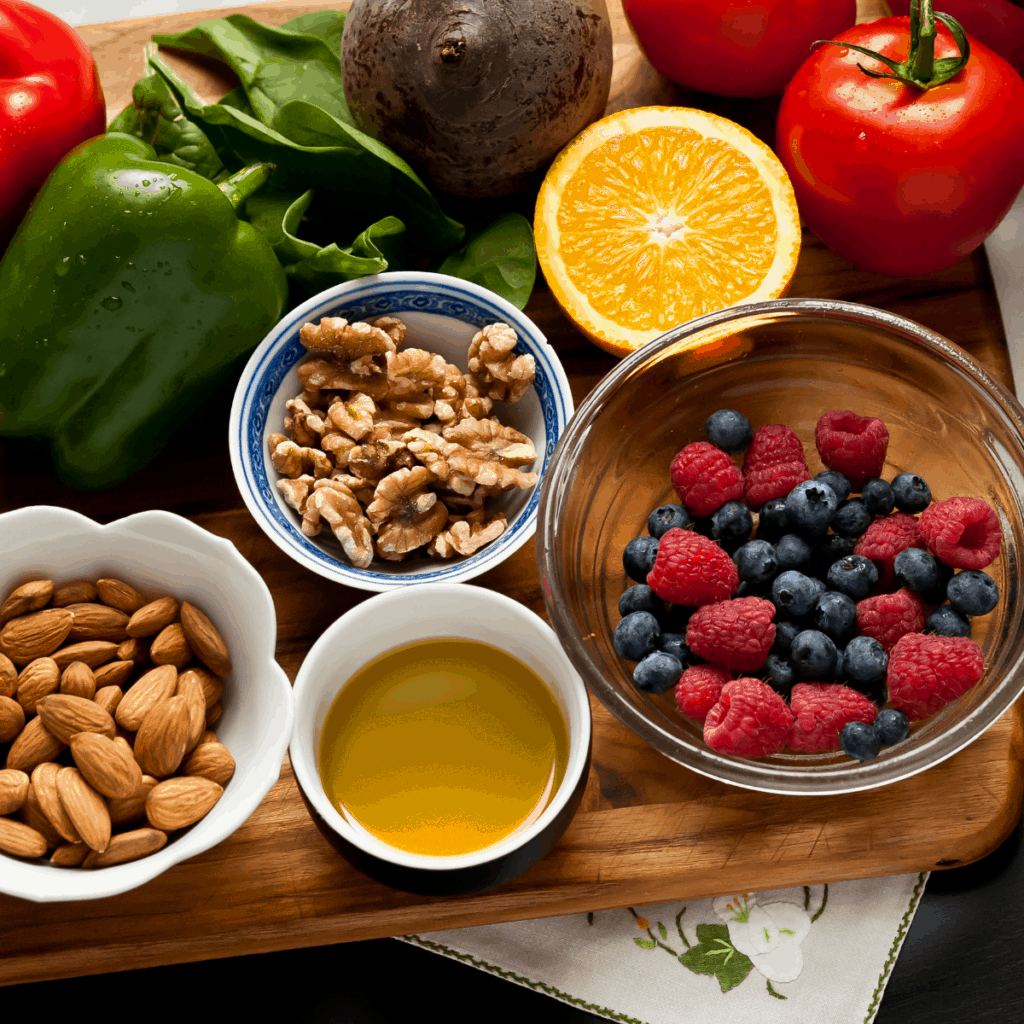
You may recall a past cut, sprain, or sore throat. The affected area feels hot and looks red and swollen. These are signs of inflammation. When you have injured cells or tissues, inflammation is a natural healing process. It’s the body’s way of responding to protect itself from foreign invaders and infections. Many anti-inflammatory drugs are aimed at reducing inflammation and suppressing the immune system, which can be essential in certain situations. Still, there are also anti-inflammatory foods that you can add to your diet with a lifestyle tweak or two as well. How to Live Anti an Inflammatory Lifestyle.
Inflammation sometimes is described as a fire. However, inflammation is a natural and essential defense mechanism. It produces specific chemicals to protect against invasion, increase blood flow to wounds, damaged areas, and remove debris. Sometimes, inflammation is a good thing. When it gets out of hand, though, you need to address the problem.
Before we talk about reducing inflammation with foods and lifestyle habits, let’s talk about the different types of inflammation.
2 Types of inflammation (acute vs. chronic)
There are a couple of types of inflammation. These are acute and chronic.
Acute inflammation is temporary. The symptoms usually come on (and present as described above), like a fire that delivers red, hot, swollen, and very painful symptoms. Acute inflammation is typically felt and seen at higher levels in a smaller area of your body.
This is a normal response to an infected area, damage, or trauma of your body. It’s a natural reaction to an uncommon event with your body. It’s necessary for your body to begin proper healing and recovery, and repair from injury.
When your cells recognize infection or injury, they send signals to call your immune system for help. Your immune system sends multiple kinds of white blood cells to help fight germs and clean damage allowing your body to heal.
Symptoms of acute inflammation could require temporary treatment for pain like over-the-counter pain relievers or ice packs/cold compresses. More serious symptoms need to be consulted with a medical professional. These would be symptoms like severe pain, fever, shortness of breath. Acute inflammation typically goes away once the damage is healed. This often only takes a few hours to a few days. Acute inflammation provides a necessary role in your body. Once complete, it quiets itself down.
Chronic Inflamation
Chronic inflammation behaves differently. It’s like a slow, burning, and smoldering fire. Inflammation like this can live throughout your entire body at low levels. Meaning symptoms aren’t localized to the particular area like in acute inflammation. This chronic inflammation can appear slowly, stay around much longer (months up to years). This is what we refer to as a bad type of inflammation.
Chronic inflammation is often undetectable without immediate or serious symptoms. However, long term, it’s been linked to many chronic diseases such as:
- Acne
- Allergies
- Asthma
- Autoimmune diseases
- Cancer
- Chronic pain
- Eczema
- Gastrointestinal disorders
- Heart disease
- Lung diseases
- Mental Health illnesses
- Metabolic diseases
- Neurodegenerative diseases
- Psoriasis
- Stroke
How does chronic inflammation begin?
It may start acutely, usually from an infection or recent injury. However, it doesn’t subside or end as it does with acute inflammation. With chronic inflammation, symptoms are persistent. Chronic low-grade inflammation also occurs with
- Exposure to chemicals
- Radiation
- Unhealthy diet
- Too much alcohol
- Not being physically active
- Emotional stress
- Smoking
- Socially isolated
- Excess weight
“For chronic low-grade inflammation not caused by a defined illness, lifestyle changes are the mainstay of both prevention and treatment,” says Harvard Health. The good news, anti-inflammatory foods help you stay healthy. They also reduce your risk of many diseases. Estimates are that 60 percent of chronic ailments and diseases could be prevented with a healthy diet. Here’s how.

6 Steps To An Anti-Inflammatory Lifestyle You Can Enjoy
The diet you consume has a large impact on inflammation. So one of the quickest ways to see a change is to change your diet. Our diets are one of the things we have the most control over, yet it can be intimidating to try and try. You will find a large and ever-growing selection of recipes that support an anti-inflammatory lifestyle in our recipe section. Don't let the word vegan or vegetarian scare you off; our recipes are easy to follow and full of flavor!
Increase your intake of:
- fruits and vegetables
- whole grains (brown rice, oats, bran)
- nuts (almonds)
- seeds
- fish
- poultry
- legumes (beans, lentils)
- healthy oils (olive oil)
Pay special consideration to foods high in antioxidant polyphenols, including
- colorful plants such as berries
- cherries
- plums
- red grapes
- avocados
- onions
- carrots
- beets
- turmeric
- green tea
- and dark green leafy vegetables like spinach and kale
Omega-3 fats
Omega 3’s can help lessen pain and resolve inflammation. This can be found in foods such as
- salmon
- trout
- mackerel
- soy
- walnuts
- flax
High fiber foods
These promote beneficial gut microbes to assist in lessening inflammation.
- whole grains
- vegetables
- fruits
- legumes
Avoid charring foods when cooking at high heat, especially during grilling.
Limit inflammatory foods such as
- red meats
- processed meats (lunch meats, hot dogs)
- fried foods
- unhealthy fats (shortening, lard)
- sugary foods and drinks (sodas, candy, sports drinks)
- refined carbohydrates (white bread, cookies, pie, cake)
- ultra-processed foods (microwave meals, dehydrated soups)
Anti-Inflammatory Cookbooks and Guides
One of the biggest challenges I believe when trying to change the way you eat is variety. When we first began eating healthier, I found myself cooking the same meals over and over. Eventually, I began craving foods that were not necessarily healthy just for a change of flavor. That's when I started looking at different cookbooks. One of my favorite ones is The Complete Anti-Inflammatory Diet for Beginners: A No-Stress Meal Plan with Easy Recipes to Heal the Immune System. It has a free Kindle option, paperback, or spiral-bound version.

Get Physical and reduce your inflammation
- Regular exercise reduces inflammation over the long term, so try to get at least 150 minutes of moderate-intensity exercise per week. Breaking this into a daily routine can help ease the process. Starting with less time and intensity is still beneficial and will build stamina over time.
- Strength training sessions (weights, resistance bands) twice weekly
Better sleep habits
Disrupted sleep is linked to increased inflammation and also to atherosclerosis (heart disease). Set a goal for 7-9 hours of peaceful sleep each night. This not only helps you to feel refreshed, but it will also allow your body to heal and repair.
Tips for better sleep
- sleep-wake plan
- exposure to natural daylight (earlier in the day is best)
- avoid caffeine 12 hours or more before bedtime
- stop all screen time at least an hour before bedtime
- relaxing nighttime routine
Quit smoking and limit alcohol
- Quitting smoking helps reduce inflammation by reducing exposure to toxins that are directly associated with inflammation
- Limit your alcohol consumption; no higher than one or two drinks daily.
Manage your stress
- Start a mental health routine, include stress-reducing activities like deep breathing, meditation, yoga, or tai chi
Be social
- Research suggests that feeling isolated is linked with higher levels of inflammation. Reach out to family, friends, make new friends, join clubs, or even volunteer work.
See your doctor or dentist
- Get your cholesterol tested. A high level of “bad” LDL cholesterol is linked to inflammation.
- You can request a blood test to check levels of CRP (C-reactive protein) which is a marker of inflammation.
- If your gums bleed when you brush or floss, this could be an indication of gum inflammation (gingivitis), Improve your oral hygiene and see your dentist
Slow and Steady
Chronic, long-term inflammation is associated with many health concerns. The first path to preventing and correcting this is with food and lifestyle changes. Start by putting the focus on adding colorful fruits and vegetables (think of the rainbow). Then add whole grains, nuts, seeds, and fish to your meals and snacks—finally, layer in lifestyle changes such as physical activity, restful sleep routine, and managing stress.